The next wave has arrived. Temple is welcoming 50 new tenured and tenure-track faculty members from the world’s leading institutions for the 2011-12 academic year.
The arrival of the new recruits — the eighth consecutive annual cohort of at least two dozen senior faculty appointments — brings the total number of tenured and tenure-track faculty members hired by Temple since 2004-05 to approximately 460, the greatest influx of scholars, researchers, artists and teachers in the history of the university.
New tenured and tenure-track faculty members have joined the ranks of ten different schools and colleges at Temple, with the College of Liberal Arts (11 hires), the School of Medicine (eight), the Fox School of Business (seven) and the Boyer College of Music and Dance (six) leading the way.
“We’re delighted to welcome another group of world-class faculty members to Temple’s community of scholars,” said Richard M. Englert, Temple’s provost and senior vice president for academic affairs. “Faculty are central to the university’s mission — Temple is only as good as its teachers, researchers and artists.”
Although Englert acknowledged that the number of new tenured and tenure-track faculty members is exciting, he stressed that Temple’s focus “will always be on quality more than quantity.”
“Recruiting the best faculty is always worth the investment,” he said, “because their work at Temple will change the lives of generations of students and spur the economies of the city and the state.”
The breadth of disciplines represented by the 2011-12 recruits is breathtaking, with incoming faculty bringing expertise to Temple in subjects ranging from the economics of sport (Joel G. Maxcy, joining the School of Tourism and Hospitality Management from the University of Georgia) to the integration of technology into architecture (Robert Shuman, joining the Tyler School of Art’s Department of Architecture from private practice). New leaders have joined several units and research centers, including the School of Social Work (led by new chair Jeffrey Draine), CLA’s Institute for Survey Research (led by new director Alex Ortega) and Temple University Hospital’s Nephrology, Hypertension and Kidney Transplantation Section (led by new chief Crystal Gadegbeku).
According to university officials, Temple’s faculty hiring boom has been made possible by several factors. The retirement of a large number of faculty members hired in the late 1960s and ‘70s — the years following Temple’s designation as a state-related institution — has increased the number of vacancies. Enrollment increases since 2000 helped to generate more tuition revenue and create a need for more instructors. The Office of the Provost also credited the energy and vision of Temple’s deans, many of whom also came to Temple in recent years.
Why We Chose Temple
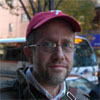 Jeffrey Draine MSW ‘90
Jeffrey Draine MSW ‘90
New position: Professor and chair, School of Social Work
Last stop: University of Pennsylvania
Why Temple attracted me: “The School of Social Work has a great reputation as a training ground for social workers who are on the front line, making changes at the policy level and on the ground. But it’s more than that. Temple University is growing. It has an upward trajectory. Every person I spoke to said that Temple is a great place to be right now.”
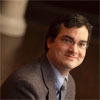 Tony Lowman
Tony Lowman
New position: Professor of bioengineering; vice provost for research and business development
Last stop: Drexel University
Why Temple attracted me: “Temple is starting a new program in bioengineering. It’s exciting to be with something at the start. Also, there’s a tremendous new push to drive Temple’s research enterprise under the leadership of [Senior Vice Provost for Research and Graduate Education] Kenneth Blank. This is an opportunity to build tech transfer and innovation.”
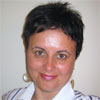 Irina Mitrea
Irina Mitrea
New position: Associate professor, Department of Mathematics
Last stop: University of Minnesota
Why Temple attracted me: “I love the university. It has an active and dynamic atmosphere. But the most important factor is the quality of the Analysis Group here at Temple. There are people here who are internationally known as leaders in the field. That makes a big difference in terms of the things that one can accomplish, both in research and in training students.”
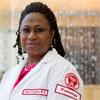 Crystal A. Gadegbeku
Crystal A. Gadegbeku
New position: Associate professor, Department of Medicine; chief of Nephrology, Hypertension and Kidney Transplantation, Temple University Hospital
Last stop: University of Michigan Health Systems
Why Temple attracted me: “I was drawn by the opportunity to lead and grow a nephrology section, but I also wanted to have an impact. Minorities are a population that is overburdened by kidney disease. As a researcher, educator and a clinician — and as an African American — I want to make a difference in the community.”
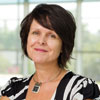 Wendy L. Magee
Wendy L. Magee
New position: Associate professor of music therapy
Last stop: Royal Hospital for Neuro-disability (London, U.K.)
Why Temple attracted me: “The Music Therapy program at Temple is internationally renowned, so it was a great privilege to be offered the position here. The students at Temple are noted for their caliber, as are my colleagues. After working as a clinician and researcher for 22 years, I wanted to be based in an academic setting and engage in teaching on a full-time basis.”
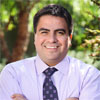 Alex Ortega
Alex Ortega
New position: Director, Institute for Survey Research; professor, Department of Public Health
Last stop: University of California, Los Angeles
Why Temple attracted me: “Temple is one of the few research universities that is committed to building a center for excellence in survey research with a strong national reputation and seeing it grow and prosper as a local and national resource.”